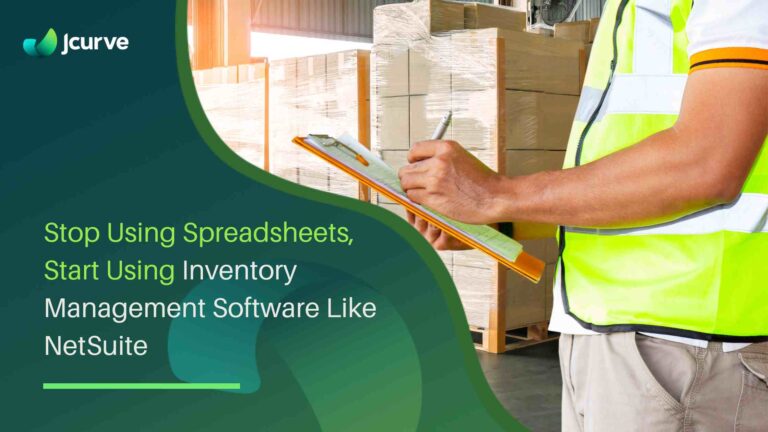ERP systems have undergone significant evolution over the years, transforming from rigid, finance-focused platforms to dynamic systems that encompass a wide range of business functionalities, including advanced order management features. This evolution reflects the changing landscape of business operations, where the ability to efficiently manage orders has become as crucial as managing finances or supply chains.
Efficiency and growth are not just goals but necessities for survival and success. Central to achieving these objectives is the implementation of robust and scalable software systems that streamline operations, manage resources effectively, and enhance customer satisfaction—especially in a dynamic and competitive market like the Philippines.
ERP Systems: Definition and Core Functions
ERP stands for Enterprise Resource Planning. At its core, an ERP system is a comprehensive software platform used by organisations to manage day-to-day business activities such as finance, human resources, manufacturing, supply chain management, and more. ERP systems integrate these various business functions into a single system to streamline processes and information across the organisation, providing a single source of truth.
Key components of ERP systems include:
- Finance: Financial reporting, ledger, payables, receivables, and cash flow management.
- Human Resources: Recruitment, payroll, training, and benefits management.
- Manufacturing: Product planning, material purchasing, inventory control, and production scheduling.
- Supply Chain Management: Order processing, procurement, inventory management, and logistics planning.
ERP systems are designed to be the backbone of an organisation’s operational infrastructure, providing a holistic view of business operations, improving efficiencies, and facilitating better decision-making through real-time data and analytics.
OMS: Definition and Core Functions
An Order Management System (OMS) is specialised software used by companies to manage the lifecycle of an order. It tracks all information and processes related to the order encompassing inventory management, order entry, order fulfilment, and customer service. The goal of an OMS is to ensure that orders are processed efficiently, accurately, and cost-effectively from start to finish, enhancing customer satisfaction and loyalty.
Core functions of an OMS include:
- Order Processing: Capturing and tracking orders from various channels (ecommerce, in-store, etc.). Coordinating order fulfilment by selecting the optimal fulfilment point, communicating with shippers/carriers, tracking status, and updating customers in real-time.
- Inventory Management: Providing real-time visibility into inventory levels across locations to optimise stock levels. Calculating specific fulfilment promises based on availability, customer location, shipping options, and business rules.
- Fulfilment: Coordinating order picking, packing, and shipping to ensure timely delivery. Allowing order amendments like cancellations, address/date changes, and initiating returns/exchanges.
- Returns Management: Handling returns and exchanges efficiently while maintaining customer satisfaction and streamlining inventory restocking.
- Customer Experience Enhancement: Improving satisfaction and loyalty by providing a seamless, flexible order experience tailored to customer expectations and preferences.
For more about OMS, read our article on What Is an Order Management System? Exploring the Fundamentals.
Key Differences Between ERP and OMS
| Feature | ERP System | OMS |
| Inventory Management | Comprehensive, multi-location, part of supply chain | Real-time tracking, order-based |
| CRM | Integrated functionalities | Limited to order history and fulfilment |
| Financials | Accounting, budgeting, reporting | Sales transactions, billing, payment processing |
| Supply Chain Operations | End-to-end, procurement, production, logistics | Focuses on fulfilment aspects |
| General Overview | Integrates all operations, enterprise-wide | Specialises in order processing and fulfilment |
| Cost and Efficiency | May increase costs, comprehensive integration | Aims to reduce costs, increase efficiency |
Similarities between ERP and OMS
| Data Handling | Gather and analyse information from varied sources like sales, purchases, inventory, and customer details through visual dashboards and reports. |
| Process Automation | Automate numerous tasks and workflows crucial to business operations, such as invoice creation, notification delivery, record updates, and activity scheduling. |
| Application Connectivity | Integrate smoothly with other essential software tools like ecommerce platforms, payment gateways, and shipping services for seamless data exchange. |
| Tailored Configuration | Provide configurable options to adapt the systems according to specific business requirements and preferences, aligning with unique processes for better user adoption. |
Which Suits Your Business Best?
ERP
ERP Systems are best suited for businesses looking for a holistic view of their operations. For example, a manufacturing company in the Philippines that needs to closely monitor its supply chain, production schedules, and financials would benefit greatly from an ERP system.
To gain further insights, explore our article “12 Key Ways ERP Systems Boost Order Management Efficiency“.
OMS
- For ecommerce and retail in the Philippines, an OMS enhances order efficiency, inventory accuracy, and customer service. It speeds up order processing, improves customer experience, and integrates with other systems for streamlined operations.
- Companies with Limited Budgets: Might opt for an OMS due to its lower initial investment and focus on critical sales and fulfilment processes.
- Flexibility and Scalability: Organisations seeking flexibility and scalability can benefit from the specialised nature of an OMS, designed to adapt to changing business needs and customer demands.
- Wholesale and Distribution: Companies managing large inventories and fulfilling business orders can optimise supply chain and logistics operations with OMS.
- Manufacturers: Selling directly to consumers or through various channels can ensure accurate order fulfilment and inventory control.
- Multichannel Sellers: Can unify sales channels and inventory management with an OMS. This adeptly manages multichannel sales and omnichannel fulfilment, optimising inventory based on various factors.
Selecting between an OMS and ERP depends on factors like budget, complexity, and growth plans. While ERPs offer broader functionality, they can create data silos and hinder order management. Conversely, while OMS excels in order management, it might require more upkeep and struggle to scale across diverse operations. Ultimately, the best choice hinges on specific business needs.
Talk to Jcurve Solutions to ease the decision-making process and implement the optimal solution tailored to your business requirements.
Navigating the Decision: OMS vs. ERP – Key Considerations
Integrating ERP-OMS Solutions
Integrating ERP with OMS offers valuable benefits:
- Improved Data Accuracy: Real-time data flow eliminates discrepancies in inventory levels, order statuses, and customer details.
- Streamlined Operations: Integrated workflows reduce manual work and bottlenecks, leading to smoother order processing and fulfilment.
- Enhanced Customer Satisfaction: Accurate data and efficient processes enable faster delivery and reliable service, increasing customer loyalty.
The rise of online shopping, demand for real-time data, personalised shopping experiences, and the expectation for fast fulfilment necessitate advanced OMS solutions.
Challenges and Solutions
- Integration Complexity: Seek an experienced consultant and define a clear strategy to navigate the technical setup.
- Data Consistency: Implement robust data management practices and utilise integration platforms with reliable synchronisation features.
- Cost Concerns: Conduct a thorough cost-benefit analysis to understand the long-term return on investment.
While cost is a concern, evaluating the total cost of ownership (TCO) is crucial. ERP systems, with their broader scope, typically have higher upfront costs and longer implementation times compared to more focused OMS solutions. However, the potential return on investment (ROI) from ERPs can be substantial due to their wider impact on efficiency.
Conversely, while potentially cheaper initially, OMS solutions offer faster returns by optimising specific areas like inventory and fulfilment, directly impacting customer satisfaction and sales.
Contact Jcurve Solutions to address challenges related to data security, scalability, and compatibility concerns with Order Management Systems (OMS), as well as potential implementation failures, poor data quality, and change management risks.
Choose Jcurve for Integrated NetSuite ERP Solutions
Businesses can leverage the power of cloud-based solutions like NetSuite ERP, combined with the expertise of Jcurve, to unlock the benefits of seamless integration between ERP and OMS.
By adopting NetSuite’s comprehensive cloud ERP platform, companies in the Philippines can adapt to market changes more effectively, enhance order management, and ultimately drive increased efficiency and customer satisfaction.
The cloud has transformed the ERP landscape, with the global cloud computing market projected to reach a staggering $1,240.9 billion by 2027, reflecting the significant shift towards these scalable and flexible solutions.
Jcurve can help navigate this decision by:
- Enhancing User Adoption: Engaging users early through training and involvement ensures system buy-in.
- Ensuring Data Quality: Cleansing data before migration maintains data integrity.
- Promoting Continuous Improvement: Encouraging feedback fosters iterative improvements after implementation.
Conclusion
Choosing the right system—be it ERP, OMS, or an integrated solution—requires a thorough evaluation of your business’s specific needs. Factors to consider include the complexity of your operations, the volume and nature of your orders, your customer service objectives, and your long-term growth strategies. By conducting a detailed analysis of these aspects, businesses can make an informed decision that aligns with their goals and enhances their operational efficiency.
Future Outlook for ERP and OMS Systems
Emerging trends like AI, IoT, machine learning, and advanced analytics are set to revolutionise ERP and OMS systems. These technological trends promise to automate complex processes, provide real-time insights, and enhance decision-making. Businesses in the Philippines can look forward to more predictive and intelligent systems that not only streamline operations but also anticipate customer needs, making operations more proactive and efficient.










